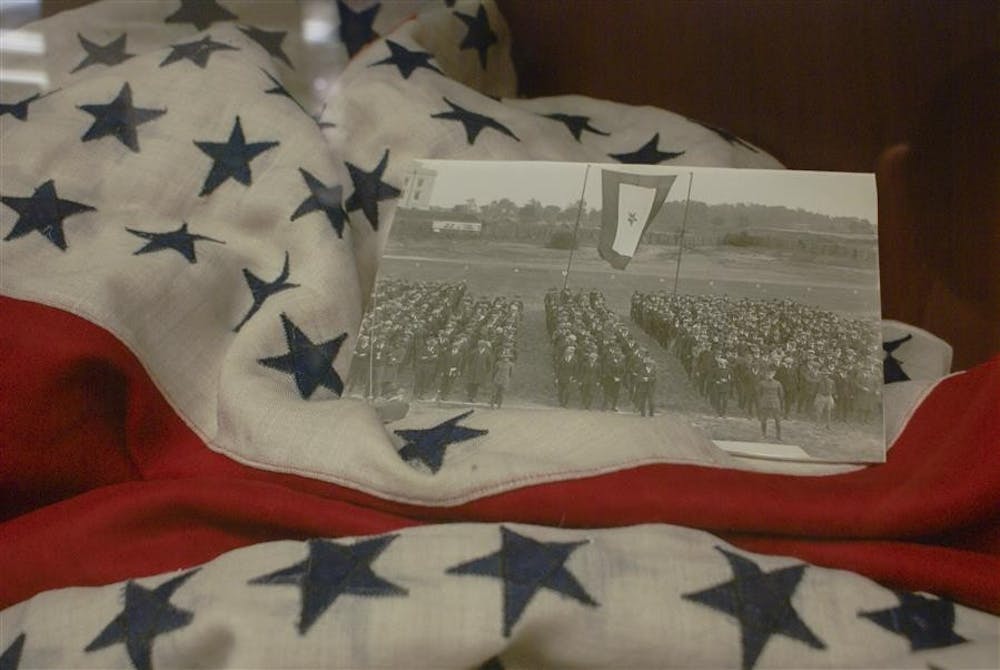Through the morass of renovations and construction in the Herman B Wells Library, the University Archives on the fourth floor of the east tower contains an exhibit encapsulating IU’s contribution in World War I.
This year marks the 100th anniversary of the start of the war.
Carrie Schwier, assistant archivist at the University Archives, said she thought it was an appropriate time to create a WWI exhibit.
As a result, library science graduate students Alison Haack and Alessandro Meregaglia curated an exhibit titled “Indiana University and the Great War: Student, Professor and Alumni Involvement in World War I.”
The creation of the exhibit not only educates the public on IU’s contribution to the war, but it also shows what the University Archives have to offer, Haack said.
“I think a lot of people assume the archives store these really boring documents, but we have alumni, professors and students’ documents,” she said. “We collect the story of IU.”
The story of how IU and WWI affected one another is told by an assortment of historical documents, including scrapbooks, photographs, Indiana Daily Student clips from the time period, handwritten letters and course bulletins, Haack said.
When WWI erupted in 1914 in Europe, United States President Woodrow Wilson issued a proclamation of neutrality.
However, repeated German submarine attacks on civilians and the loss of American lives incited the entry of the U.S. into WWI in April 1917.
Like many Americans, the IU community rallied to contribute and support the war effort.
By the fall semester of 1918, 60 percent of the student population had enlisted in the Student Army Training Corps, according to the exhibit.
Former IU President William Lowe Bryan still wanted the students in the SATC to obtain their undergraduate degrees.
Therefore, he consolidated the SATC academic coursework so the students were able to complete their degree requirements in two years, Haack said.
She said it was important to find a balance for students to contribute to the war effort and have students prepared to contribute to the skilled labor force after the war.
In addition to the SATC program, IU offered students courses that could
potentially be beneficial to the war campaign during the 1918-19 academic year.
“There were emergency courses created for training and instruction in first aid, making of garments for Red Cross and civilian relief, hygiene and home care for sick people,” Haack said.
The exhibit also highlights the contributions of the Red Cross, the 1918 influenza outbreak on campus and the IU ambulance corps that spent months overseas during the war.
There are photos of the SATC members standing outside of their barracks, which were repurposed fraternity houses, hospital beds that were set up in Assembly Hall to combat the influenza epidemic and women working in a Red Cross workshop located in Kirkwood Hall.
Haack said she and Meregaglia spent nearly two months working on the exhibit.
It was fun doing the research, and it was a difficult process determining what materials to place in the exhibit, Haack said.
The exhibit is free and will be on display in the IU Archives from 8 a.m. to 5 p.m. weekdays until June 30.
Fighting from the classroom

Get stories like this in your inbox
Subscribe


